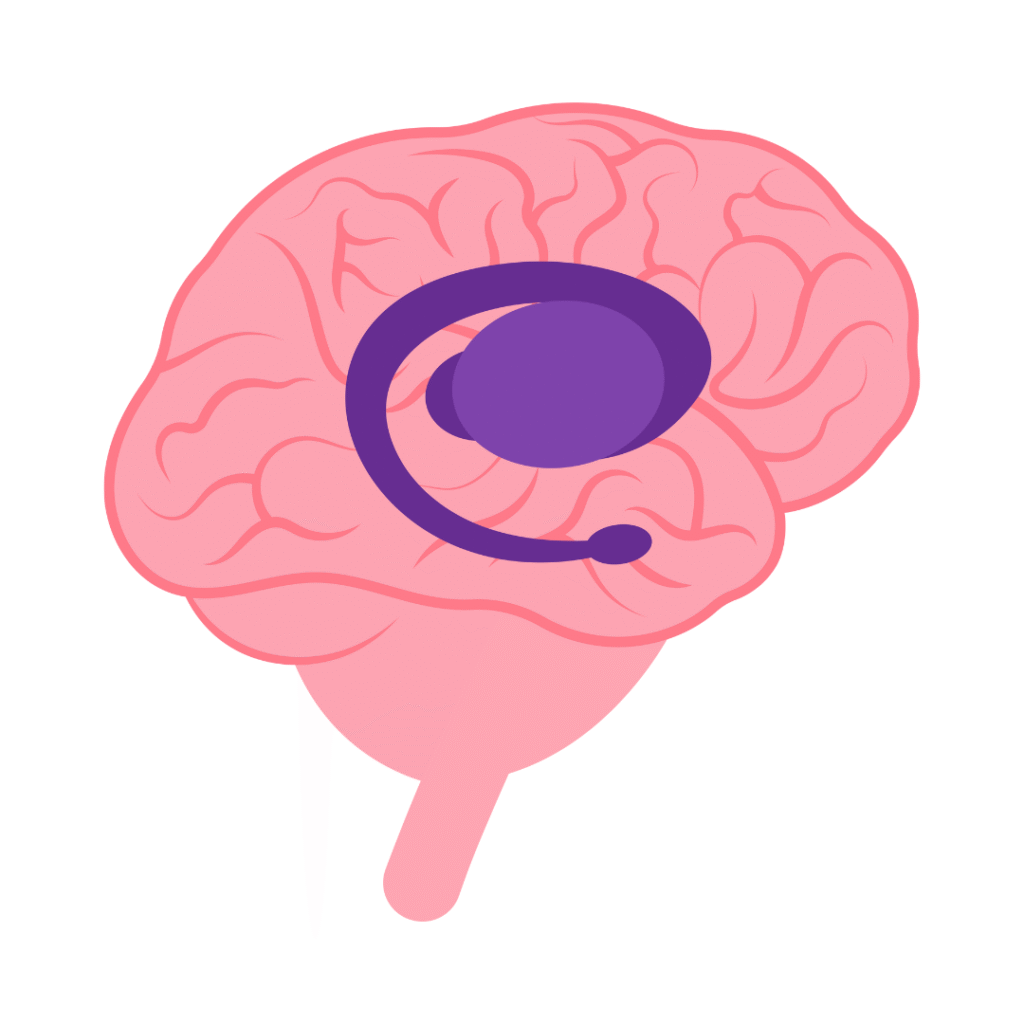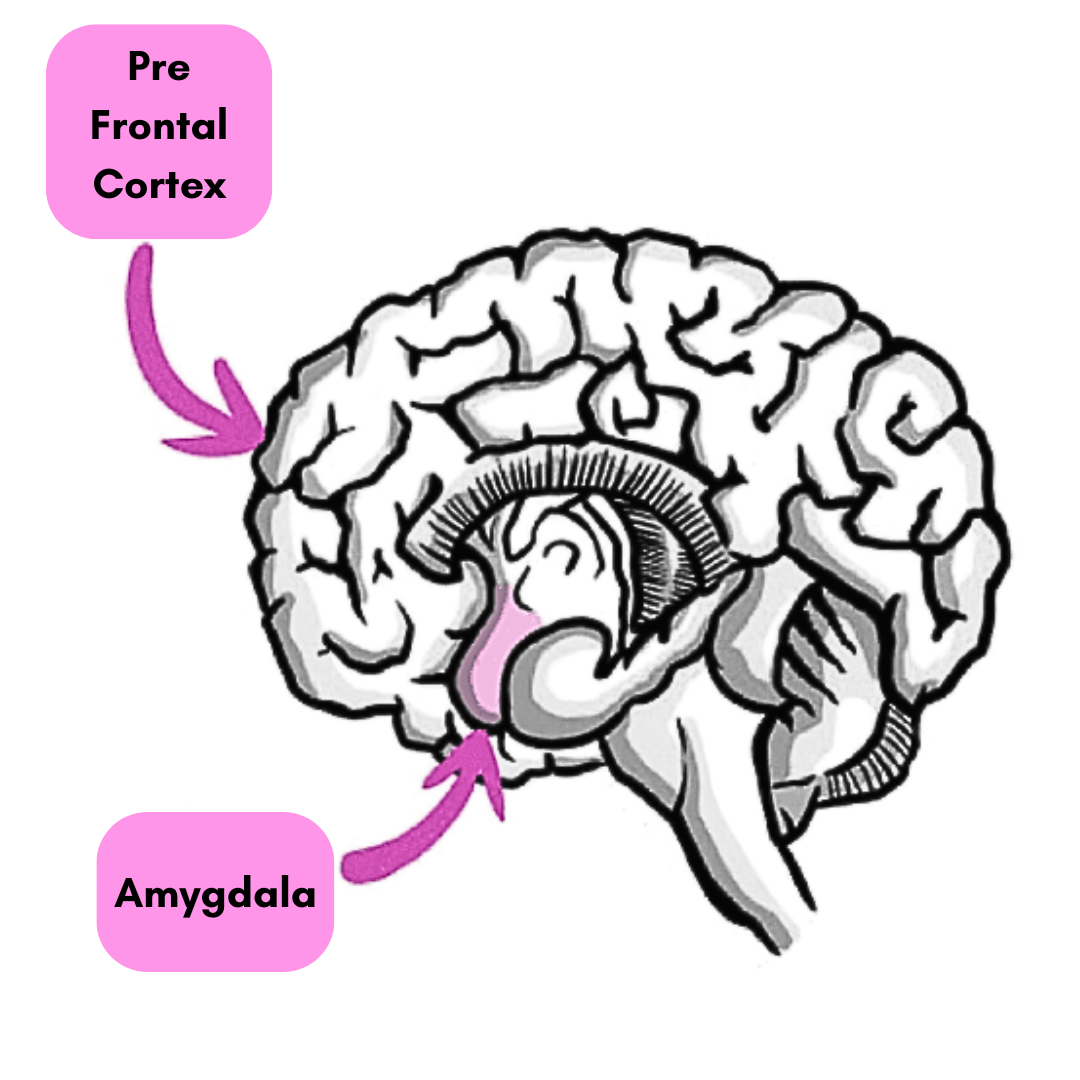The prefrontal cortex (PFC) and amygdala are crucial brain structures that work together to manage emotions and decision-making, with the amygdala detecting threats and emotions, and the PFC providing top-down regulation and cognitive control.
This interaction is vital for emotional regulation, learning, and responding appropriately to situations.
Disruptions in this circuit are linked to conditions like PTSD and impulsivity.
Amygdala

- Function: Primarily involved in processing emotions, especially fear and threat detection. It acts as the brain’s “alarm system”.
- Role in interaction: Triggers the initial emotional and physiological response to a stimulus.
- Key areas: Divided into subnuclei, such as the basolateral amygdala, which is a key node in the circuit.
Prefrontal cortex (PFC)

- Function: Handles executive functions like decision-making, planning, and self-control. It also plays a key role in regulating emotional responses.
- Role in interaction: Receives signals from the amygdala and provides a more reasoned, cognitive assessment of the situation. It can then signal the amygdala to either dampen or continue the response.
- Key areas: Includes various regions like the orbitofrontal cortex (OFC) and medial prefrontal cortex (mPFC), each with specific roles.
The interaction
- Threat assessment: The amygdala detects a potential threat, and the PFC evaluates the threat to determine if the response is appropriate.
- Emotional regulation: A healthy PFC can inhibit the amygdala’s fear response, a process that is crucial for managing anxiety and fear.
- Learning and memory: The PFC and amygdala work together in processing and storing memories related to emotions and experiences.
- Decision making: Interactions between the PFC and amygdala are essential for making decisions, particularly when rewards and punishments are involved.
When the circuit is disrupted
- Impulsivity: A weakened PFC-amygdala connection can lead to impulsivity, where individuals have difficulty delaying gratification.
- Compulsivity: An inability to flexibly change behavior in response to new information may be linked to disruptions in this circuit.
- Stress and trauma: In cases of trauma, stress can lead to reduced PFC activity and increased amygdala activity, which impairs the ability to extinguish fear responses and contributes to conditions like PTSD.



